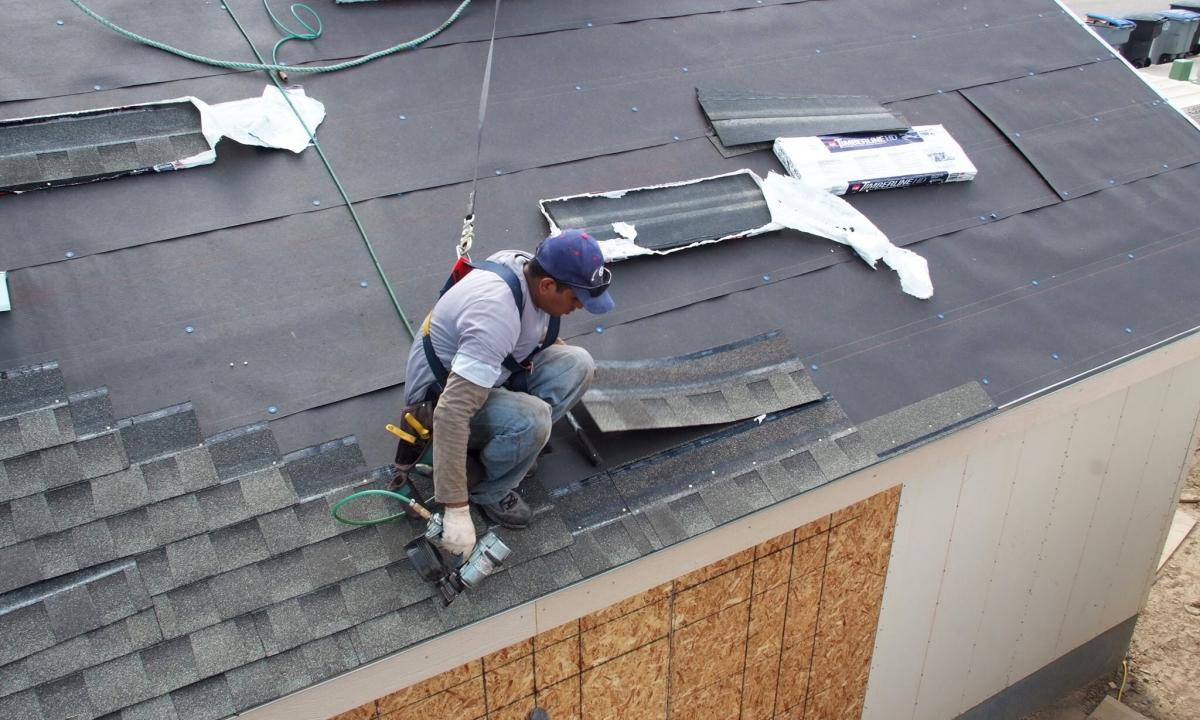Often at construction of own house there are questions as it is correct to choose a professional flooring for a roof what has to be optimum thickness and what it is necessary to pay attention to. There is nothing surprising in it as material though is known long ago, was used only for the industrial purposes earlier, and here country construction became interested in it a few years ago.
How to choose a professional flooring for a roof?
Three types of material are defined by state standard specification: bearing (it is designated by letter "H"), wall ("With") and universal ("NANOSECOND"). The bearing and universal options as they possess the necessary form and height of a profile for resistance to high loadings best of all are suitable for a roof. To increase bearing capacity use big waves and additional stiffening ribs. Information on height of a wave can be obtained, having looked at marking, the first two figures and are its size in millimeters. The following group of figures designates the useful width of a leaf, real will be more as they keep within with an overlap.
To give the answer to a question what professional flooring one roof better to choose, it will be necessary to be defined for what it to use. One business if you want to make a roof with a big bias which will not be exposed to high loading, and absolutely another – if you need the flat operated roof. In the first case cheap sheet C10 which will be able to sustain small influence will approach, in the second it is necessary to pay attention to H60 or H75 options.
To choose a professional flooring, it is required to know also what thickness the leaf will be suitable for a roof better. Material durability depends on this indicator too, and the it is higher, the more reliably. At different types thickness varies within 0.5 - 1.2 mm, the option, suitable for any case, does not exist as everything depends on your purposes. Therefore at first it is necessary to count loading which will appear on your roof. For this purpose use standards of wind and snow influence for your region, to consider a bias and to add the weight of the leaf. Knowing exact figure, you will be able to choose the necessary material without problems. Remember that changing characteristics, it is possible to save, without risking reliability. For example, having chosen material with wave height the 57th smaller width of a leaf and big thickness it is possible to receive indicators not worse than H60 option and is slightly weaker than sheet H75.
The tightness therefore it is better to give preference to a professional leaf with a capillary flute on edge also is important for a roof. It will allow to take away moisture, without allowing it to get inside. Such addition will help to avoid double butt sealing even when laying with an overlap in one wave.
With what covering does the good professional flooring have to be?
The cheapest sheets are carried out their cold-rolled steel with electroplated zinc coating not less than 275 g/m2 thick, but producers can save therefore be always interested in this indicator. Such type of a protective coating is rather short-lived therefore usually work with such sheets at the device of shoddy constructions. And for a roof use options complemented with a polymeric covering.
- Polyester. The most budgetary of them is polyester – the coloring 20-30 microns thick providing resistance to temperature differences and UV rays. But polyester paint is easily scratched.
- Plastizol – mix from polyvinylchloride with softeners has bigger thickness and allows to reproduce various invoice. This option is more resistant.
- Pural – a covering from polyurethane and polyamide paint with an opaque surface. The layer has thickness to 200 microns, it has high resistance to chemical and mechanical influences.
- PVDF – very with firmness transfers influence of the sun and hostile environment.
The choice between protective coatings needs to be made, proceeding from terms of use. For example, will be suitable for sea climate purat better or PVDF, and here polyester will quickly collapse under the influence of salty particles. And in a temperate climate plastizol or polyester will perfectly feel therefore more expensive options are not necessary.
"

